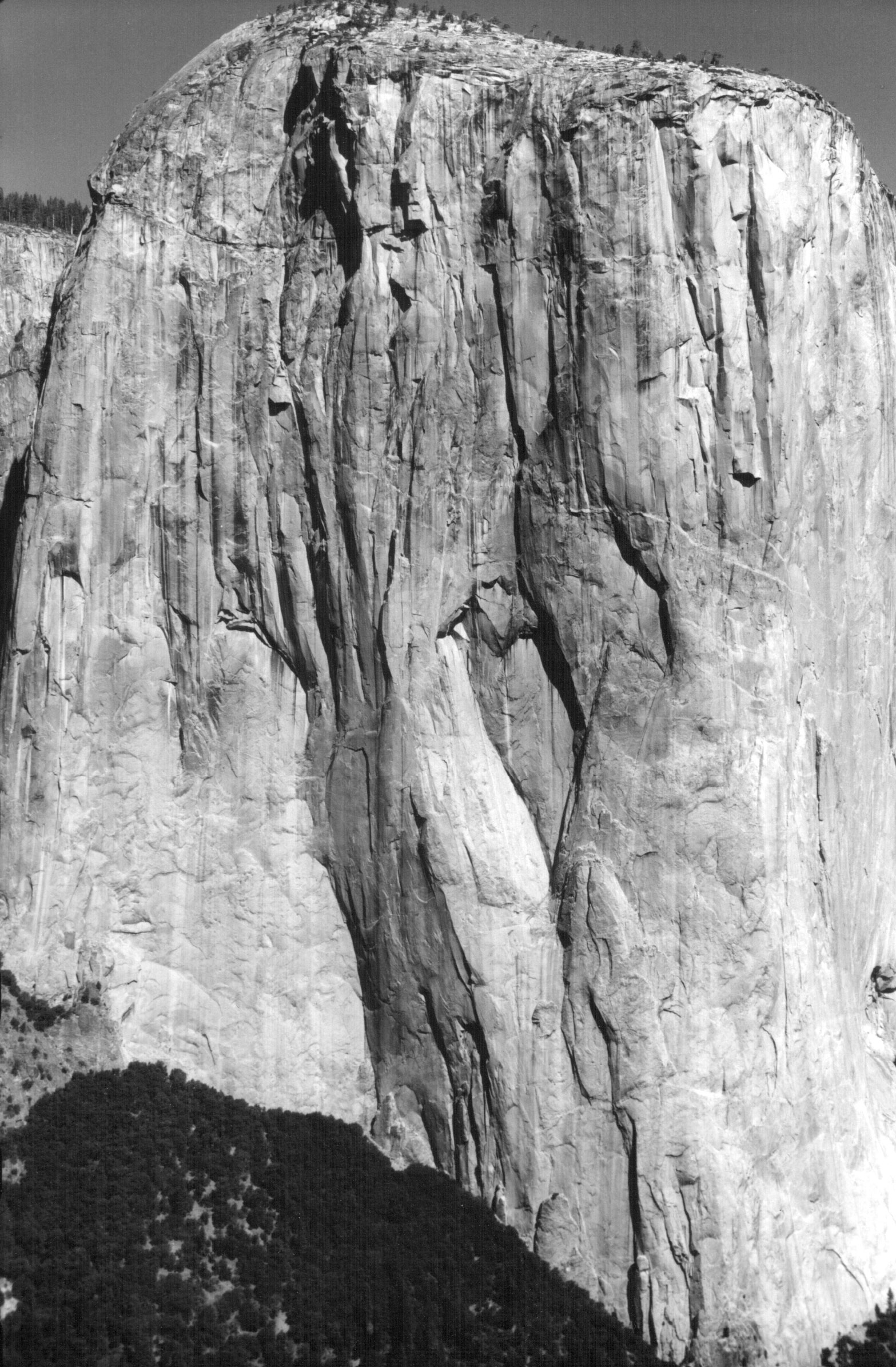|
The southwest face of El Capitan is home to two world class routes named
in honor of the founding fathers of Yosemite climbing:
John Muir and John Salathé.
The southwest face is also El Cap’s finest wall.
John Muir traveled all the way from Scotland to become
Yosemite’s first climber and to teach us how to do it on tangible and
intangible levels. “Whenever
I met a new plant I would sit down beside it for a minute, or a day, to
make its acquaintance, and to see what it had to tell” (John Muir,
played by Lee Stetson in the Yosemite Theater). And
again, “I only went out for a walk and finally concluded to stay out
till sundown, for going out, I found, was really going in.”
John Salathé came from Switzerland. His
Lost Arrow Chimney and Sentinel Rock climbs set new climbing standards.
Salathé’s
climbs were lightweight, huge commitments into unknown territory that
lasted up to five days. Robbins,
the leader of Yosemite’s next generation acknowledged:
“He
had this sense of style, of never taking the easy way out.
Of all the climbers we knew, he was the one who would push the
furthest, without resorting to bolts, so he became our, kind of,
standard to aim at.” (Royal
Robbins, interview by Kristi Denton Cohen, “Vertical Frontier”)
Salathé
so inspired us that in 1960 Chouinard and the Camp 4 community named El
Cap’s southwest face the Salathé Wall.
A significant moment occurred here in 1988 when Paul Piana and
Todd Skinner topped out on the Salathé Wall after having completed the first ever free ascent of a big
wall. It was a world class
achievement. As Piana
belayed the final pitch his primary anchor, a large block, suddenly slid
from its perch and pushed them off the wall.
They were left injured, hanging by the thread of a nearly
completely shredded rope. Their
survival was a miracle. Nothing
happens by accident, so what’s happening here?
I liken Piana and Skinner’s situation to that of the Martin
Handcart Company, Mormon pioneers who trekked across the Great Plains in
survival conditions. An old
man from this company, his face white with emotion, spoke of their
experience calmly, deliberately, but with earnestness and sincerity:
I
have pulled my handcart when I was so weak and weary from illness and
lack of food that I could hardly put one foot ahead of the other.
I have looked ahead and seen a patch of sand or a hill slope and
I have said, I can go only that far and there I must give up, for I
cannot pull the load through it.
I
have gone on to that sand and when I reached it, the cart began pushing
me. I have looked back many
times to see who was pushing my cart, but my eyes saw no one.
I knew then that the angels of God were there.
Was
I sorry that I chose to come by handcart?
No. Neither then nor
any minute of my life since. The
price we paid to become acquainted with God was a privilege to pay, and
I am thankful that I was privileged to come in the Martin Handcart
Company. (ENSIGN,
February 2006)
The message, I believe, is this:
it is apparently worth the price of miracles for us to be
reminded that, no matter how grand our achievement, we did not do it
alone.
THE SALATHÉ WALL, from the summit
of Lower Cathedral Rock, Yosemite National Park, California, 30
September 1961.
|
